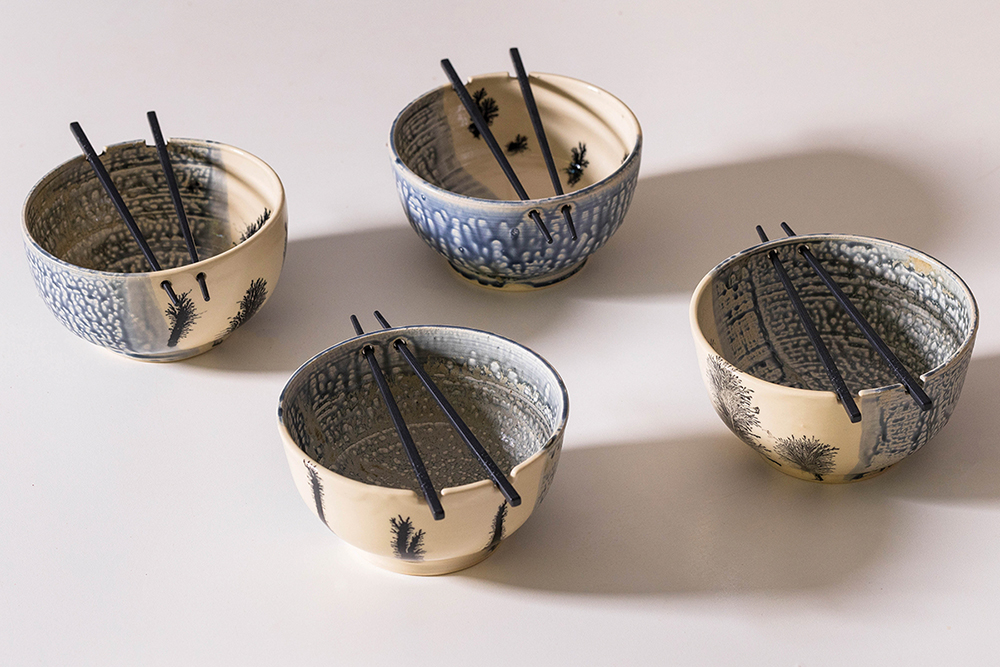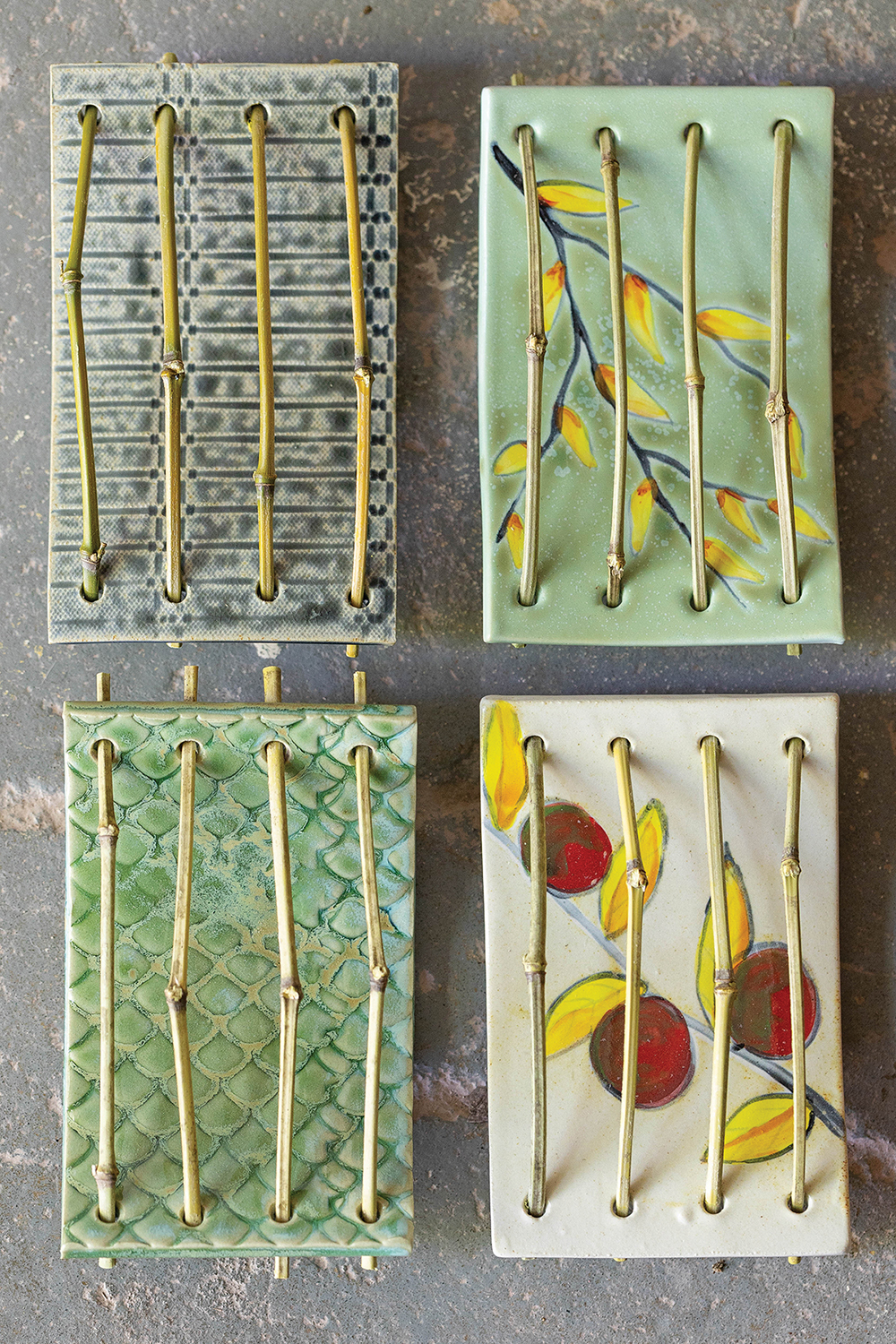By: Storme Smith
Potter uses scientific techniques to create original work

Brad Worden uses complex techniques (including mocha diffusion and majolica) to whimsical effect.
Photo by Colby Rabon
Brad Worden, a scientist turned potter, has found his niche in the Asheville area’s thriving ceramics scene. Worden, who received a PhD in Evolution and Ecological Biology at Ohio State, moved to Asheville from Tucson, Arizona, several years ago with his partner. The move was motivated by a desire for change and a love for the city’s beauty and feel. Once in Asheville, he quickly became immersed in the ceramics community, taking classes at the Odyssey Center for Ceramic Arts and Asheville-Buncombe Technical Community College.
Years before moving to Asheville, though, “I took a pottery class in Ohio,” says Worden. “I found [it] to be a highlight of my week. The class wasn’t very structured, so it allowed me to play with the clay without any preconceived ideas about what to do or how to do it. That unstructured introduction motivated me and increased my sense of wonder over the possibilities.”

At A-B Tech, his interest flourished under renowned teacher Becca Floyd; Worden took her courses until she eventually moved to Nashville.
“You might expect a continued-education class to be pretty lax,” adds Worden. “But Becca treated every class seriously, and I found myself in a rigorous course with set lessons and skill training. At first, I rebelled against that because of my freewheeling start to pottery. However, I soon fell in love with Becca’s style and the courses she taught. It was all about wheel throwing with Becca, and my throwing skills improved rapidly.”
Worden draws inspiration from the natural world, incorporating decorative elements like birds and trees into his pieces. But his work is as practical as it is sculptural. His bamboo soap dishes, for example, were inspired by a need to keep soap high and dry and an overabundance of bamboo on his property.
“Sometimes it’s all about filling a need and trying to make it look cool, too.”

Worden is drawn to different ways of understanding the world, whether scientific or mythological. His pieces often tell stories, as with his sculpture “Crow Brings Back the Light.”
“It’s based on an Inuit myth,” he explains. The theme is “the need for patience with the patterns of nature, [due to] long months of darkness in the far North waiting for the light to return. It also reveals something about interconnectivity. Respect for nature by the Inuit people is reciprocated by the crow, who brings light to the people. I see art as another way to explain the world, the universe.”
But he also calls himself “a science geek” and proclaims: “Using some science to make magic will always draw me in.” Satisfying both approaches, he incorporates classical surface techniques such as mocha diffusion — which is dependent on an acid/alkali chemical reaction — and majolica.

Mocha diffusion was popular in England in the 18th and 19th centuries and derives its name from the feathered pattern of moss agates, a semi-precious stone imported from Mocha (also Mokha), a port city on the Red Sea in Yemen. “I’ve taught workshops and demonstrations of mocha diffusion, and it always captivates an audience watching the pattern appear in front of them.”
Worden adapted traditional majolica, a low-fire decorating technique from 15th-century Spain, to higher-fire stoneware.

“My use of majolica evolved as I worked through various techniques to illustrate the outside of my pots. I landed on majolica because it was the best fit for what I was trying to accomplish, adding brighter colors in the most efficient way possible. With majolica, you paint on top of a pure white glaze, keeping [the colors’] vibrancy.”
As an active participant in the local arts scene, Worden has, for the last six years, participated in the Come to Leicester Annual Artist Studio Tour, a self-guided rural driving tour in northwestern Buncombe County.
“Visitors get an opportunity to see artists in their studios — and to view the gorgeous landscapes of this area,” says Worden.
Brad Worden, Sycamore Bend Pottery, on Instagram and Facebook @sycamorebendpottery. The artist’s work is available at Squeaky Wheel Pottery Studio, 1 Roberts Ave. (squeakywheelpottery.org), and Odyssey Gallery of Ceramic Arts, 238 Clingman Ave. (odysseygalleryofceramicarts.com), both in Asheville’s River Arts District; and at Silver Fox Gallery (508 North Main St., Hendersonville, silverfoxgallery.net). Worden will participate in the Come to Leicester Annual Artist Studio Tour, a self-guided driving tour happening Saturday, Aug. 17 and Sunday, Aug. 18, 10am-5pm (see info and a map at cometoleicester.org).
